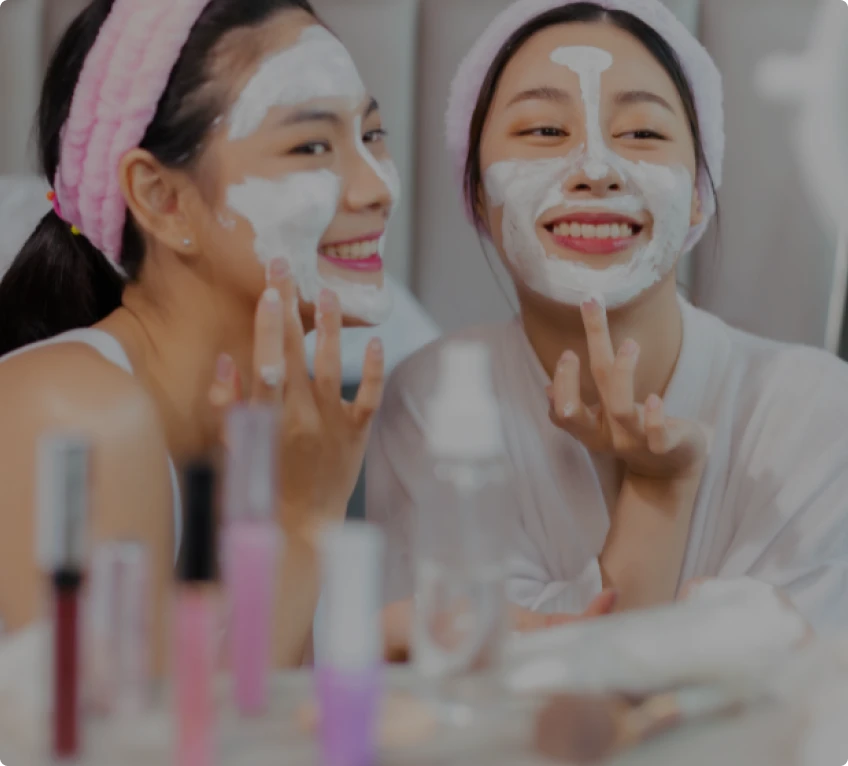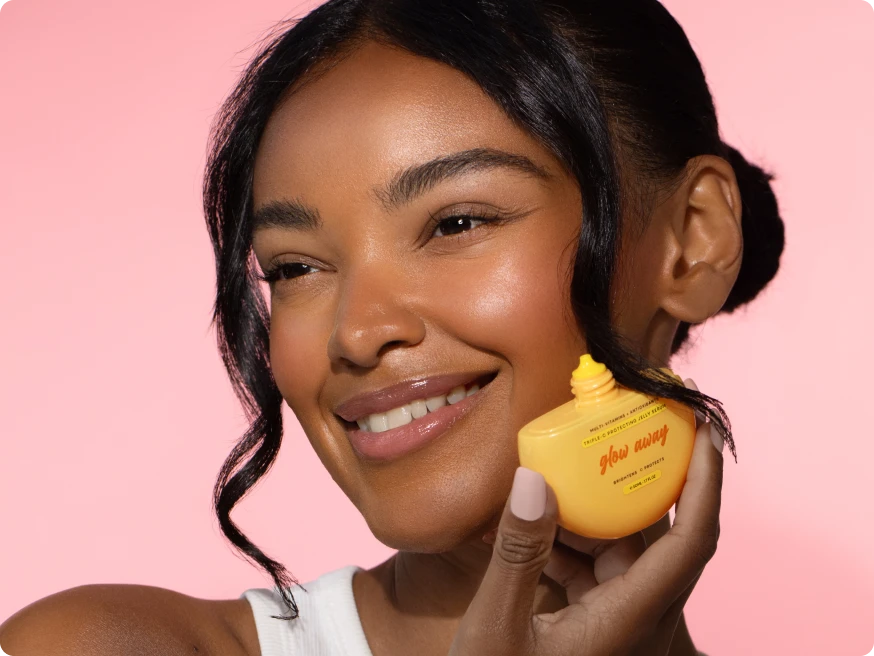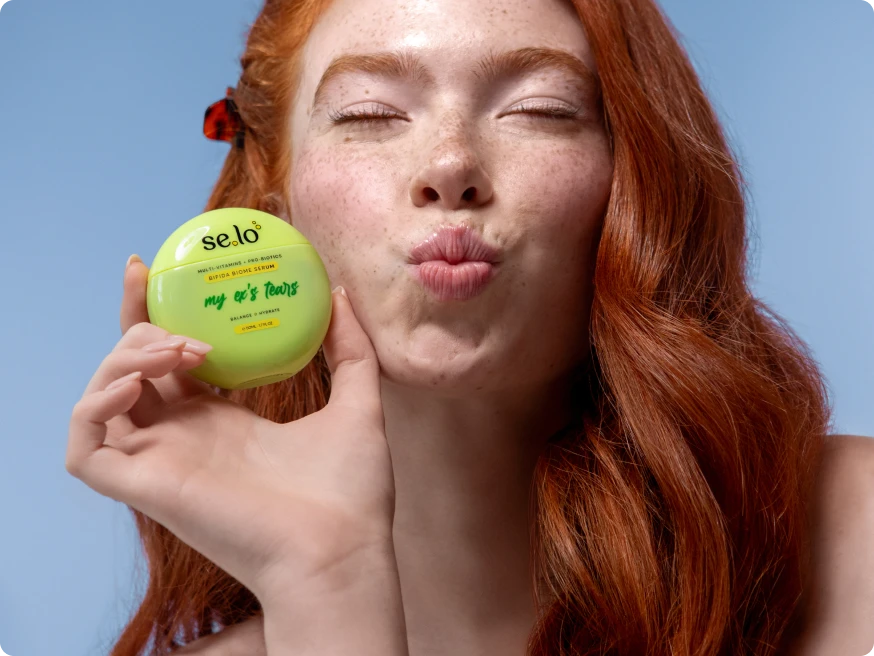Understanding the teenage skin

Teenage Skin
Your teenage years (between the ages of 13 and 18) are accompanied by fluctuating hormones, rapid growth, and bodily changes. It’s also incredibly common to experience issues with your skin during this time.
So what exactly is going on with your hormones? What effect do they have on your skin? And how can you create or adapt a skincare routine to help?
What Are Hormones & How Do They Affect Your Skin
Hormones are chemical messengers that travel in your blood and tell your body what it needs to do and when it needs to do it. They control many of your body’s normal processes like your:
- Blood Pressure
- Blood Sugar
- Growth & Development
- Sexual Function
- Sleep/Wake Cycle (Circadian Rhythm)
They also affect how your skin functions, especially when they are in a state of fluctuation. The main hormones that affect your skin are:
- Estrogen (the main female hormone)
- Progesterone
- Androgens (the main male hormone)
During your teenage years, your androgen hormones increase which triggers your oil glands to produce more oil. This can lead to greasy skin and acne outbreaks.
Oily Skin
The oil (sebum) your skin produces plays a vital role in your skin’s hydration by acting as an occlusive to hold moisture in your skin. It also helps maintain your skin’s naturally acidic pH and a healthy skin microbiome.
However, when your skin produces too much oil, it can leave your skin feeling greasy and often causes clogged pores and acne breakouts.
There are four main skin types based on how much oil your skin produces:
- Oily - too much oil
- Combination - too much oil in some areas (e.g. t-zone) but a normal amount or not enough oil in other areas (e.g. cheeks)
- Normal - balanced oil levels (the right amount to keep your skin hydrated without causing greasy skin)
- Dry - not enough oil
In the meantime, you can reduce the oiliness of your skin with various skincare ingredients like:
- Salicylic Acid
- Niacinamide
- Green Tea
Oil production can also be elevated if your skin is dehydrated so it’s important to use gentle cleansers and moisturize your skin regularly.
Acne
Acne is an inflammatory skin condition that causes spots and pimples. It’s the main skin condition affecting teenagers due to the hormonal changes that happen during puberty.
Acne has multiple different causes that often overlap:
- Increased oil production
- Irregular skin cell turnover (either too fast or too slow)
- Bacteria
- Inflammation
During puberty, your skin produces more oil due to increased androgen hormones. On top of this, the skin cells within your pores reproduce faster and form a sticky plug (comedone) with your skin’s oils that can block your pores. The acne-causing bacteria (c.acnes) love the oxygen-free environment that this creates and are able to multiply more rapidly which causes inflammation. Your body responds to this by sending your white blood cells to kill the bacteria.
Once your white blood cells have killed the bacteria, they die themselves and turn to pus. Your body then absorbs the pus as it heals the pimple. If you pick or squeeze your pimples, the healing process takes a little longer due to the wound you’ve created as well as increased inflammation.There are two main types of acne - inflammatory and non-inflammatory.
The easiest way to tell which type of acne you have is by the color and appearance of your pimples. Inflammation causes redness, swelling, and sometimes pain/discomfort so if you experience pimples like this then you have inflammatory acne.
Non-inflammatory acne = blackheads and whiteheads
Inflammatory acne = papules, pustules, nodules, and cysts.
In teens, non-inflammatory acne tends to be more common than inflammatory acne but you may experience either or both. In order to treat acne, you need to target the four different causes which usually means multiple active ingredients.
Best Ingredients For Teenage Acne
There are a number of skincare ingredients that can help improve the appearance of acne. However, the most well-researched are:
- Benzoyl Peroxide
- Retinoids
- Salicylic Acid
- Niacinamide
- Azelaic Acid
Benzoyl Peroxide
Benzoyl peroxide is an acne treatment that breaks down into benzoic acid and benzoyl radicals when you apply it to your skin. Benzoyl radicals are particularly effective at killing acne-causing bacteria as they create oxygen in your pores (the bacteria like an oxygen-free environment). Benzoic acid can also help by allowing the free flow of oil from your pores to the surface of your skin. It does this by breaking down the dead skin cells that are clogging your pores.
While there is plenty of research to demonstrate that benzoyl peroxide is an effective treatment for acne, it may be too harsh and drying for your skin. It can also deplete your skin’s natural vitamin E levels by 90% and vitamin C levels by 65%.
Retinoids
Retinoids (e.g. retinol, retinal, retinoic acid) are vitamin A derivatives that help to regulate the rate at which your skin produces new skin cells which means fewer clogged pores. They’re also very effective at reducing inflammation and can help prevent acne scarring.
There are different types of retinoids that vary in their effectiveness and their irritation potential. All retinoids have to convert into the active form of retinoic acid when applied to your skin and the more conversion steps, the less irritating the retinoid is likely to be.
For example, retinol has to convert into retinal, then into retinoic acid. So it’s worth starting with retinol, to begin with, and, if your skin isn’t irritated you may wish to look at trying retinal or retinoic acid (usually requires a prescription). When starting retinoids, it’s also better to start slow. For example, use your retinoid once a week for two weeks, then twice a week for two weeks, and so on until you build up a tolerance. Research suggests that you can still get all the benefits of retinoids by using them 1-3x a week but it might take a little longer to see results.
Salicylic Acid
Salicylic acid is a beta-hydroxy acid (BHA) and chemical exfoliant that helps break down the bonds that hold your skin cells together so that they can be shed from your skin. It’s also oil-soluble which means that it can easily penetrate and exfoliate your pores and reduce oil production.
Research has found that salicylic acid is an effective treatment for both inflammatory and non-inflammatory acne. However, using chemical exfoliants too frequently can make acne worse by irritating your skin and increasing inflammation. Stick to a maximum of 1-3x a week to get the best results with the least amount of irritation.
Niacinamide
Niacinamide is a water-soluble form of vitamin B3 that acts as an antioxidant to protect your skin. It’s also anti-inflammatory, and anti-bacterial, and can help reduce oil production.
Research suggests that it can also help strengthen your skin barrier and reduce the irritation commonly experienced with other acne treatments. For example, one study found that pre-treating the skin with niacinamide for a month before starting retinoids helped strengthen the skin barrier and reduce retinoid-induced irritation. If you plan to include harsher acne treatments like benzoyl peroxide, retinoids, or salicylic acid, it’s worth also including niacinamide in your routine to help protect your skin. However, a lot of niacinamide serums contain a higher concentration than is typically used in research studies.
For the best results, look for serums with 2-5% niacinamide or niacinamide-containing moisturizers.
Azelaic Acid
Azelaic acid is a dicarboxylic acid found in wheat and barley that is very effective at reducing inflammation and fighting acne-causing bacteria. It also has a mild exfoliating effect that's gentle enough for even the most sensitive skin.
If you have sensitive skin, azelaic acid would be a good alternative to retinoids and benzoyl peroxide. Research suggests that azelaic acid is equally as effective as retinoic acid at treating whiteheads and blackheads but causes less irritation. Azelaic acid is also able to reduce skin sensitivity which can make it a good active ingredient to use alongside harsher skincare ingredients like retinoids.
Other Conditions That Affect Teenage Skin
While oily skin and acne are the most common skin issues that teenagers face, you might still experience other skin conditions like eczema, dryness, or sun damage. Usually, eczema gets better with age and is less common in teenagers and adults than it is in children. However, if you’re prone to eczema flares, you’ll want to focus your skincare routine on keeping your skin barrier strong and healthy and your skin well hydrated.
Ingredients that can help with this include:
- Ceramides
- Niacinamide
- Beta Glucan
- Hyaluronic Acid
- Peptides
- Shea Butter
- Glycerin
- Petrolatum (Vaseline)
The sun damage that occurs in childhood and adolescence isn’t always obvious until you’re older when you may notice fine lines and wrinkles appearing. Sunburn in your younger years is also a major risk factor for skin cancer so it’s important to avoid sunbeds and wear sunscreen regularly.
Due to the increased rate of growth in your teenage years, you may also experience stretch marks which first appear red or purple but will eventually fade with time. You may be able to speed this up with skincare ingredients that boost collagen production, like retinoids and vitamin C. However, there isn't a huge amount of research supporting topical treatments as effective against stretch marks.
How To Create A Skincare Routine Suitable For Teenage Skin
When it comes to creating a skincare routine, it’s always important to start with the basics:
- Cleanser
- Moisturizer
- Sunscreen
These are essential for keeping your skin healthy. Other products, like serums and toners, may help improve skin conditions but an overcomplicated skincare routine can end up making your skin worse.
Cleanser
Your cleanser should be effective enough to remove oil and makeup but it shouldn't leave your skin feeling dry or tight after use. You may also find that you don’t need to use a cleanser in your morning skincare routine - for some people, a splash of water is more than enough.
It can be helpful to use a cleanser that contains salicylic acid but, although the instructions say to use it once or twice a day, it’s safer to use it a maximum of 3x/week to avoid over-exfoliation.
Moisturizer
When it comes to moisturizing, a lot of people with oily skin and acne worry that it could cause or worsen acne outbreaks. However, this is not the case. In fact, research suggests that acne is associated with a damaged skin barrier and reduced levels of ceramides and fatty acids.
Your skin barrier has a ‘bricks-and-mortar’ like structure where lipids, like ceramides, cholesterol, and fatty acids, act like glue to hold your skin cells together and form a protective wall. When your skin barrier doesn’t contain enough lipids, it causes gaps to form in your ‘wall’ which water can escape from and irritants can enter through. This leads to dryness and inflammation which can worsen existing acne.
Using a moisturizer that contains ceramides and fatty acids can help improve acne by strengthening your skin barrier and reducing inflammation. Your skin’s natural exfoliation process also requires your skin to be well hydrated in order to function properly.
Look for moisturizers that contain ingredients like:
- Ceramides
- Niacinamide
- Centella Asiatica
- Peptides
- Hyaluronic Acid
These ingredients all help hydrate your skin while having additional anti-inflammatory and antibacterial effects.
Sunscreen
Sunscreen is an essential part of any skincare routine. Even if you’re not worried about premature aging yet (of which sun damage is the leading cause), the sun can damage your skin in other ways. For example, research suggests that too much sun exposure can increase the size and activity of your oil glands which, in turn, can increase pore size, and oiliness, and contribute to acne breakouts.
There are plenty of acne-friendly sunscreen options to choose from, it’s just a case of finding one that you feel comfortable wearing every day. Some people find that mineral sunscreens containing zinc oxide work well for their skin as zinc is also antibacterial and can help control acne-causing bacteria. However, there are plenty of chemical sunscreens that can also help.
Introducing Targeted Active Ingredients
You may already have active ingredients in your cleanser, moisturizer, and/or sunscreen. However, once you’ve nailed your basic skincare routine and have been able to stick with it consistently for a month, you could start adding targeted active ingredients. Targeted active ingredients are those that have an effect on the skin condition you wish to treat. For example, retinoids, acids, antioxidants, etc.
It’s important to only introduce one active ingredient at a time as:
- Introducing too many active ingredients at once can lead to skin barrier damage and irritation.
- If an active ingredient reacts badly with your skin, you’ll know exactly which ingredient is causing the problem.
A lot of people are tempted to jump straight into the 10-step skincare routine that their favorite influencer uses but, more often than not, less is more when it comes to skincare.
Try to stick to a maximum of two targeted acne ingredients where possible, for example:
- Niacinamide and retinol
- Salicylic acid and niacinamide
- Retinol and azelaic acid
- Benzoyl peroxide and niacinamide
For example, your skincare routine may look like this:
AM = Cleanse with water, Niacinamide Serum, Moisturizer, and Sunscreen.
PM = Cleanser with salicylic acid (3x week) or gentle cleanser (4x week), niacinamide serum, moisturizer.
Or
AM = Gentle cleanser, niacinamide moisturizer, sunscreen
PM = Gentle cleanser, retinol, niacinamide moisturizer
Remember that it usually takes at least a month or two of consistency before you start seeing results.
Some skincare ingredients may also make your skin look worse before it gets better. This is referred to as ‘purging’ and usually only happens with skincare ingredients that increase cellular turnover (e.g. acids, retinol) and should only happen in areas where you would usually experience breakouts. If you’re breaking out in areas that you don’t usually experience acne and/or if the breakouts aren’t clearing with continued use of the product, it’s likely that the skincare ingredient or product doesn’t agree with your skin and you should stop using it.
Conclusion
The hormonal fluctuations in your teenage years can have a big impact on your skin. The most common skin concerns in teenagers tend to be oily skin and acne due to an increase in androgen hormones and oil production. There are various skincare ingredients that can help improve these conditions but it’s important to avoid using too many products as it can damage your skin barrier and make your acne worse.It also takes consistency and time to see results from any new skincare routine.
0 comments





